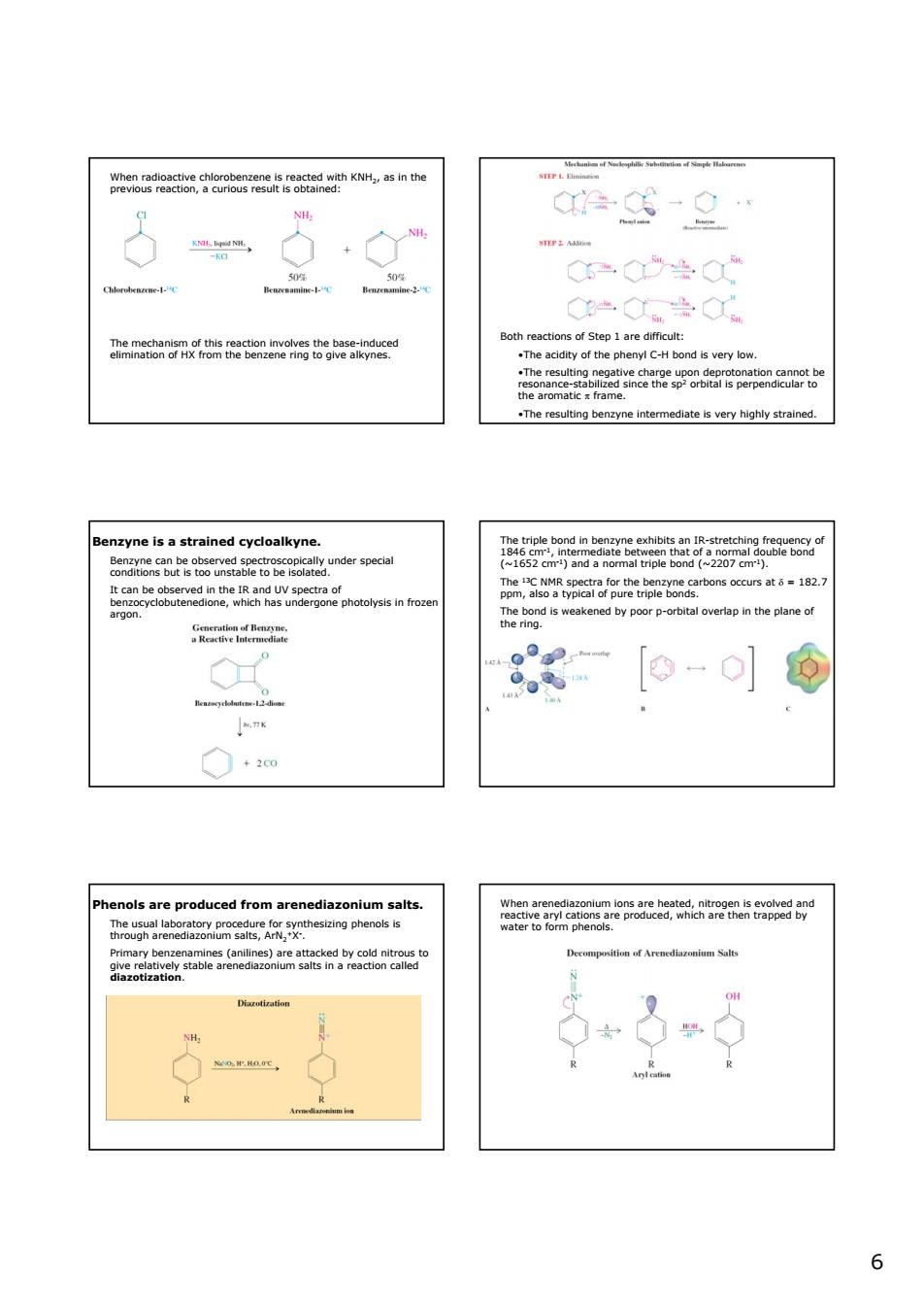正在加载图片...

=5 eg旦 Ca memso2antete0neohs地egaag Bothreactio of Stepare dufficult: .Theacdy of the phenylCH bond is veryw zyne is a strained cycloalkyne. nuntaetobed Underspecal 6-e-o]® ○·2o Phenols are produced from 3a 6 6 When radioactive chlorobenzene is reacted with KNH2, as in the previous reaction, a curious result is obtained: The mechanism of this reaction involves the base-induced elimination of HX from the benzene ring to give alkynes. Both reactions of Step 1 are difficult: •The acidity of the phenyl C-H bond is very low. •The resulting negative charge upon deprotonation cannot be resonance-stabilized since the sp2 orbital is perpendicular to the aromatic π frame. •The resulting benzyne intermediate is very highly strained. Benzyne is a strained cycloalkyne. Benzyne can be observed spectroscopically under special conditions but is too unstable to be isolated. It can be observed in the IR and UV spectra of benzocyclobutenedione, which has undergone photolysis in frozen argon. The triple bond in benzyne exhibits an IR-stretching frequency of 1846 cm-1, intermediate between that of a normal double bond (~1652 cm-1) and a normal triple bond (~2207 cm-1). The 13C NMR spectra for the benzyne carbons occurs at δ = 182.7 ppm, also a typical of pure triple bonds. The bond is weakened by poor p-orbital overlap in the plane of the ring. Phenols are produced from arenediazonium salts. The usual laboratory procedure for synthesizing phenols is through arenediazonium salts, ArN2 +X- . Primary benzenamines (anilines) are attacked by cold nitrous to give relatively stable arenediazonium salts in a reaction called diazotization. When arenediazonium ions are heated, nitrogen is evolved and reactive aryl cations are produced, which are then trapped by water to form phenols